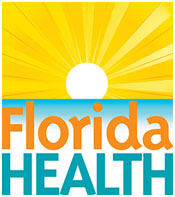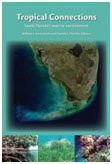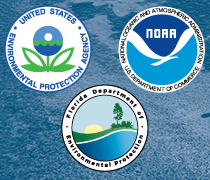
Florida Healthy Beaches Program
The Florida Department of Public Health monitors beaches of the Florida Keys for the presence of fecal bacteria. Marine waters are tested for enterococcus bacteria which is an indicator of potential harmful pathogens and viruses. Enterococcus is present in human and animal waste and can enter marine waters from stormwater runoff, wildlife and seabird waste, pets, failing septic systems, cesspits, sewage treatment plant spills, broken sewer lines or boating discharge. Bacteria present at high concentrations in recreational waters may be ingested by swimming or transmitted through openings or cuts through skin through and may result in gastrointestinal disease, infections or rashes.
According to studies conducted by the EPA, enterococci have a greater correlation with swimming-associated gastrointestinal illness than other bacterial indicator organisms, and are less likely to "die off" in saltwater. If an enterococci result were observed to exceed 104 colony forming units per 100 milliliters of beach water sampled and a resampling result also exceeds this value, then a "Beach Advisory" would be issued for the location.
Florida Healthy Beaches Program Categories are:
- Good = 0-35 Enterococci per 100 milliliters of marine water
- Moderate = 36-104 Enterococci per 100 milliliters of marine water
- Poor = 105 or greater Enterococci per 100 milliliters of marine water

Monitored
- Bahia Honda State Park
- Founder Beach
- Ft. Zachary Taylor
- Harris County Beach
- Higgs Beach
- John Pennekaml State Park
- Smathers Beach
- Sombrero Beach
http://water.epa.gov/lawsregs/lawsguidance/beachrules/upload/2009_04_13_beaches_files_beachbill.pdf
Tropical Connections: South Florida’s marine environment

This book summarizes information on topics ranging across every aspect of the south Florida marine ecosystem from mangrove forest to coral reefs in a manner that is easy to read and understand. The book covers physical and biological
oceanography, ecology, human impacts, and climate change. This book is unique in that it consists of fact pages that were prepared by 162 experts in their scientific disciplines. Filled with rich graphics and photos, it is appropriate for students,
educators, scientists, and stakeholders.
Author(s): Kruczynski WL and Fletcher PJ
- Chapters:
- Geographic Settings and Impact to Environment
- Oceanographic Connectivity
- Water Quality
- Coral Reefs and Hardbottom Habitats
- Seagrass Habitats
- Mangrove Habitats
- Animal Diversity
- Human Connections
The book is also available for purchase at IAN Press:
http://ian.umces.edu/press/books/publication/374/tropical_connections_south_florida_s_marine_environment_2012-07-02/

